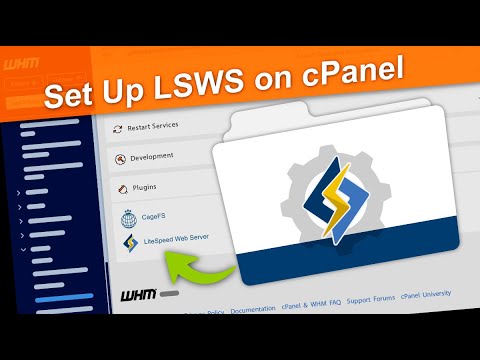
LiteSpeed Web Server (LSWS) is a high-performance, feature-rich web server that has gained popularity for its impressive speed and efficiency. Designed as a drop-in replacement for the traditional Apache web server, LiteSpeed brings numerous advantages, including improved performance, reduced resource usage, and advanced features. In this article, we will explore LiteSpeed Web Server, its benefits, and provide a step-by-step guide on how to install and configure it for optimal web hosting.
A- Understanding LiteSpeed Web Server
LiteSpeed Web Server is known for its ability to handle a large number of concurrent connections while consuming fewer server resources compared to other web servers like Apache. It's compatible with Apache configurations, making the transition smooth for those familiar with Apache setups. LSWS supports popular web technologies like PHP, Python, Ruby, and more, making it versatile for a variety of web applications.
B- Key Features of LiteSpeed Web Server
- Performance: LSWS is renowned for its speed and efficiency, outperforming Apache and Nginx in many scenarios. It utilizes event-driven architecture and asynchronous I/O, resulting in faster response times.
- Compatibility: LSWS is fully compatible with Apache configurations, allowing for a seamless transition without requiring extensive changes to existing setups.
- Security: LiteSpeed incorporates advanced security features, including DDoS protection, real-time anti-malware scanning, and support for secure protocols like SSL/TLS.
- Ease of Use: The LiteSpeed Web Server control panel provides a user-friendly interface, making it easy to manage server settings, monitor performance, and deploy web applications.
C- Installing LiteSpeed Web Server - A Step-by-Step Guide
Step 1: Server Requirements Check:
Before installation, ensure that your server meets the system requirements for LiteSpeed Web Server. This includes having a supported operating system, sufficient RAM, and available disk space.
Step 2: Download LiteSpeed Web Server:
- Visit the official LiteSpeed Technologies website and navigate to the downloads section.
- Choose the appropriate version for your operating system and download the installation package.
Step 3: Installation:
- Upload the installation package to your server.
- Extract the package and navigate to the installation directory.
- Run the installation script using the provided commands.
- Follow the on-screen prompts to complete the installation.
Step 4: Initial Configuration:
- Access the LiteSpeed Web Server control panel using your web browser.
- Log in with the default credentials.
- Configure server settings, such as listener ports, virtual hosts, and security options.
Step 5: Testing and Optimization:
- Create a simple HTML file and test the server's functionality by accessing it through a web browser.
- Fine-tune server settings for optimal performance, including adjusting cache settings, compression, and other performance-enhancing features.
Step 6: Integrating with Web Applications:
- If running PHP applications, configure PHP settings in the LiteSpeed control panel.
- For SSL/TLS support, configure SSL certificates and enable secure connections.
Conclusion
LiteSpeed Web Server is a robust and efficient choice for web hosting, offering exceptional performance and advanced features. By following the steps outlined in this guide, you can successfully install, configure, and optimize LiteSpeed for your web server needs. Whether you're hosting a small website or managing a high-traffic application, LiteSpeed's speed, compatibility, and security features make it a valuable asset in the world of web hosting.








